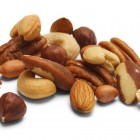Truly Deeply Madly
I’ll Drink to That, Tequila: LOOKING PAST THE SALT AND LIME, Tequila 101
December, 2015
Tequila hails from Mexico, but this nectar of the agave plant is enjoyed all over the map. From college kids throwing back cheap shots to a private collector buying a bottle for a record-setting $225,000, this spirit attracts all kinds. But before you indulge your inner Jimmy Buffet with a margarita or pop some Patron like you’re P. Diddy, top up your tequila IQ with facts on all five types: gold, silver, reposado, añejo and extra añejo.
Silver
Silver tequila (also called white or blanco) gets its name from its clear colour. This 100 percent agave tequila is an affordable option and is considered the purest expression of the agave plant.
Age: Silver tequila is either bottled right after distillation or aged up to 60 days in stainless steel tanks.
Flavour: This tequila’s taste is all agave, giving it a bold, earthy flavour. It may burn a little going down.
Cost: Low-range.
How to Serve: Great for mixed cocktails or shots.
Gold
Gold (or young) tequila is silver tequila that’s been coloured and flavoured artificially with ingredients such as oak extracts, glycerine or sugar-based syrup. Gold tequila is usually only about 50 percent agave plant, making it a “mixto.”
Age: Gold tequila is not aged.
Flavour: A lower-quality tequila, gold tequila has a harsher flavour and isn’t as smooth as other classifications.
Cost: Low-range.
How to Serve: Gold tequila is best served as a mixed drink or as a shot chased with lime.
Reposado
Straw-like in colour, reposado (or rested) tequila is the middle ground between a young silver tequila and an aged añejo—it’s smooth going down, but doesn’t quite have the complexities that come with age.
Age: Reposado tequila is aged in oak barrels for at least two months and up to one year.
Flavour: Reposado is smooth and mellow with a soft oak flavour.
Cost: Mid-range.
How to Serve: Excellent in a mixed drink or as a sipping tequila. Makes a great shot, too.
Añejo
Also called old or vintage tequila, añejo tequila is the good stuff. A dark, golden colour, añejo tequila is for true tequila aficionados who appreciate its complexities and will savour each sip.
Age: Añejo tequila is aged in oak barrels (or sometimes used bourbon barrels) for at least one year and up to three years.
Flavour: As an aged tequila, añejo takes on more flavours from the barrel. Silky and mellow, añejo has pronounced wood flavours and undertones of butterscotch and caramel.
Cost: High-range.
How to Serve: Best served neat in a brandy snifter (or any tapered glass).
Extra Añejo
Extra añejo, which is also called ultra añejo, is the newest classification of tequila (introduced in 2006). Its richness in colour, body and flavour makes it the most expensive type of tequila on the market.
Age: Extra añejo is aged in oak barrels for more than three years.
Flavour: Very smooth and complex, extra añejo has a smoky flavour with hints of wood, caramel and chocolate.
Cost: High-range.
How to Serve: This tequila is definitely for sipping; use a brandy snifter (or any tapered glass).
Storing Tequila
Store tequila in a cool, dry place with the top on tight to avoid evaporation and oxidation.
t8n
Did You Know? Tequila is made by distilling fermented juices of the blue agave plant, which grows in the Tequila region of Mexico (in the state of Jalisco). An agave plant must grow for 7 to 10 years before it’s ready to be harvested and used to make tequila.












